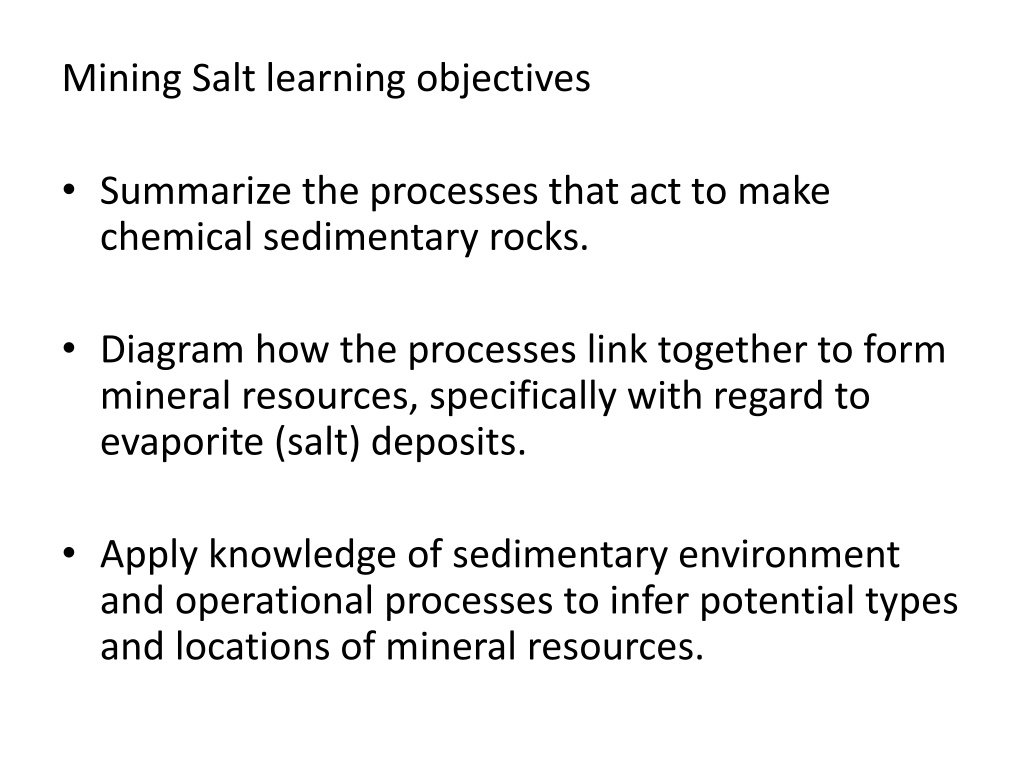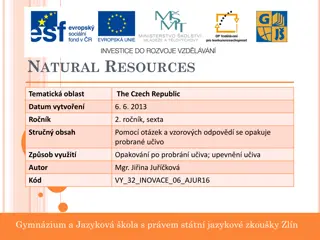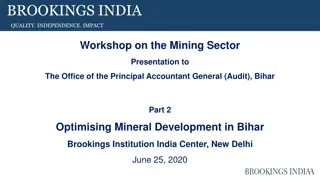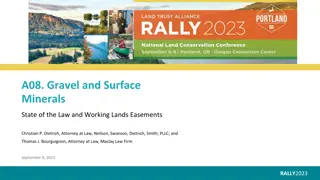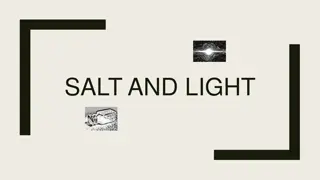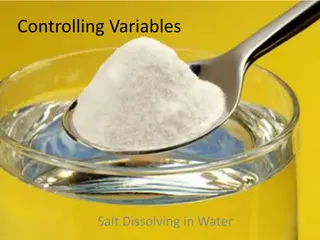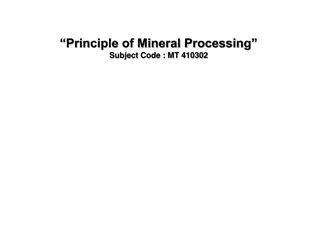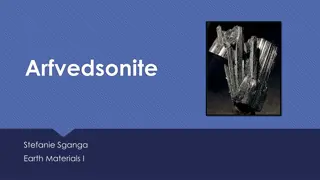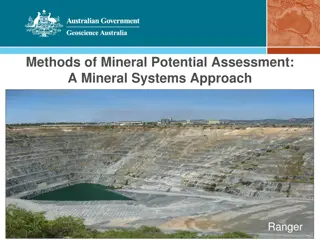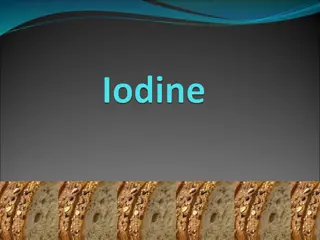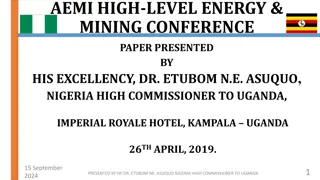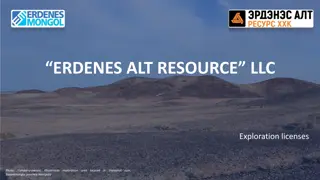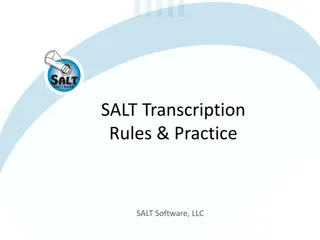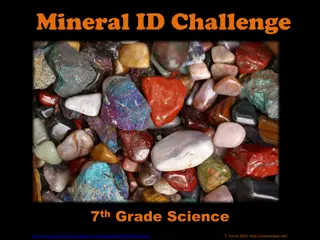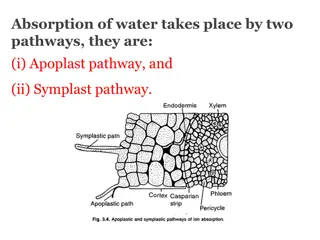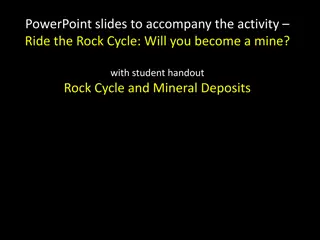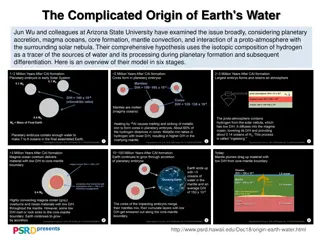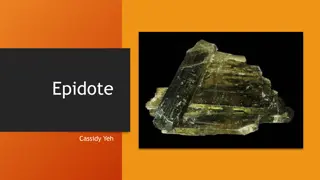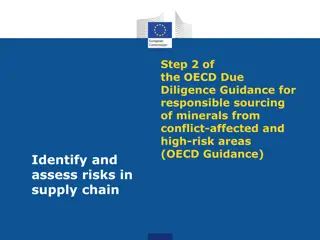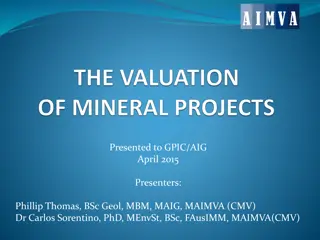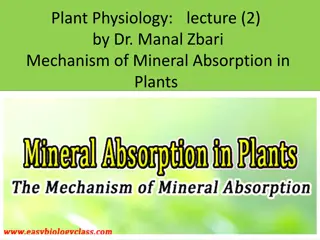Formation of Salt Deposits: Processes and Mineral Resources
Understanding the processes involved in the formation of chemical sedimentary rocks, particularly evaporite deposits like salt, is crucial for inferring potential mineral resources. This involves concepts such as evaporation, chemical weathering, crystallization, and lithification, which link together to form mineral deposits in locations like the Bahamas and Utah. Explore the characteristics of areas where salt deposits form today, compare sea salt to rock salt, and evaluate the pros and cons of salt mining in different locations.
Download Presentation

Please find below an Image/Link to download the presentation.
The content on the website is provided AS IS for your information and personal use only. It may not be sold, licensed, or shared on other websites without obtaining consent from the author. Download presentation by click this link. If you encounter any issues during the download, it is possible that the publisher has removed the file from their server.
E N D
Presentation Transcript
Mining Salt learning objectives Summarize the processes that act to make chemical sedimentary rocks. Diagram how the processes link together to form mineral resources, specifically with regard to evaporite (salt) deposits. Apply knowledge of sedimentary environment and operational processes to infer potential types and locations of mineral resources.
evaporation deposit chemical weathering crystallization lithified erosion minerals rocks on land surface oceans ions 1. In your own words, define the words in BLUE. 2. Use the concepts above to make a concept map showing how the salt deposits in the Bahamas and in Utah formed.
CONCEPTS evaporation deposit chemical weathering crystallization rocks on land surface lithified ions oceans minerals
Additional questions: 3. In what sorts of places do you think salt deposits are forming today? (What are the characteristics of places in which salt deposits can be found?) 4. The completed concept map can be used to answer this question: Is "sea salt" really any different from normal (rock) salt? Explain. 5. What are the pros and cons of mining salt in the two locations?
